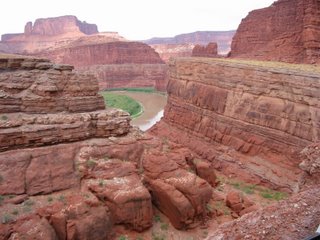
One of our most enjoyable days on our trip through Utah in 2003 was a river trip through a small part of the enormous Canyonlands National Park. The start of the trip was quite close to our motel in Moab, Utah, the logical place to stay while visiting Canyonlands and Arches National Parks. First we drove on rough, off-pavement trails barely wide enough for the SUV provided by a local tour company:
Tag A Long Expeditions.The driver/guide during the first half day was remarkably skilled at navigating, as well as highly informed about the geology, history, and terrain of the park. At many points we looked directly from the car window down into an abyss with the river far below.
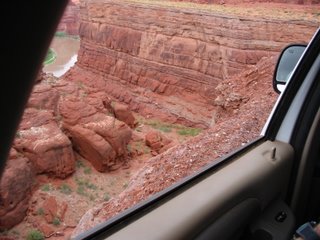
We also looked up or down at birds and animals, the only residents of this incredible, desolate space. Note the mountain goat, protectively colored:
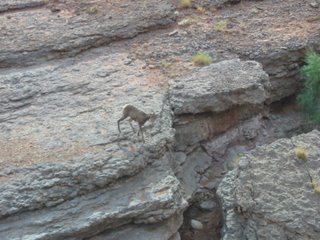
We stopped often, once at the top of a flat-topped arch, the same type of formation that gives its name to Arches N.P. The narrow stretch of rock that I'm walking on -- gingerly -- was above this arch:
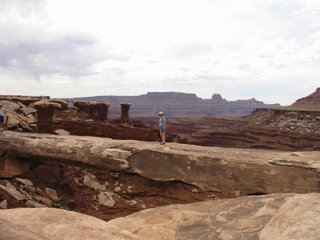
During both the morning drive and the aftenoon boat trip, we also stopped at several Indian locations, where we saw grain storehouses, cave dwellings, and petroglyphs from the early Indian nomads and village dwellers.
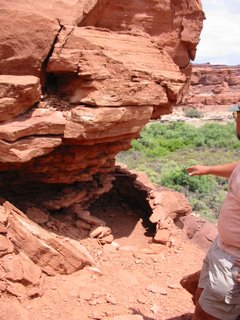 Above: an ancient grainery.
Above: an ancient grainery.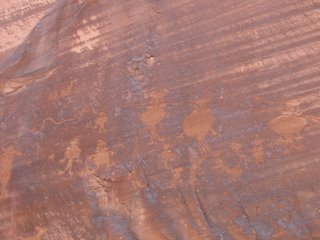 Above: petroglyphs on the rock face.
Above: petroglyphs on the rock face.In the course of the conversation, the guide (whose main job is as a high school teacher) told us many things about the town of Moab, the history of the area, and the students and families he has met, particularly the back-country Mormons, who often have large and only somewhat acknowledged polygamous families. As a result of their customs, many Mormons in Utah are quite poor, and the children suffer for the decisions of their parents and the pressure on them to marry young.
At the bottom of the trail, the road seemed to dive straight down into the river canyon. At this point we met the boat and new driver. The two guides prepared our picnic lunch, and we boarded the riverboat while the driver returned overland with the SUV. The bottom of the canyon was as dramtic as the roads above it. For a while, we stripped to our bathing suits and jumped into the cool, swift river. A thunder storm boiling on the cliff tops provided some excitement while we were tubing downstream.

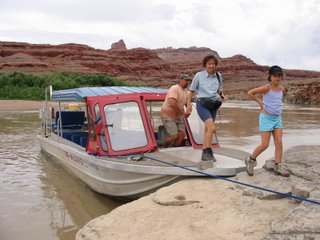 Above: at the end of the trip, we and the others on tour (shown here) disembarked and took a shuttle bus back to the outfitters' office in Moab.
Above: at the end of the trip, we and the others on tour (shown here) disembarked and took a shuttle bus back to the outfitters' office in Moab.At my request, the first guide recommended a few books about the terrain, its people, and its history. I have read these books since we returned from Utah, and found all of them as fascinating as the guide himself:
Edward Abbey's
Desert Solitaire
Wallace Stegner's
Mormon Country
John Krakauer's
Under the Banner of Heaven : A Story of Violent Faith























